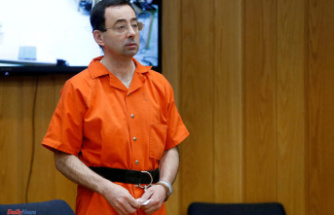Astronomers have found evidence that a black hole or a neutron star opened a spiral step towards the nucleus of another and caused it to explode as supernova, an event on which theories existed, but until now it had not been identified.
The team, which today publishes its results in Science, used VLASS project data (VERY LARGE ARRAY SKY SURVEY), which has among its objectives locate transient objects. "Of all the things we thought about discovering with Vlass this was not one of them," said one of the authors of the study, Gregg Hallinan, the Technological Institute of California (Caltech).
Normal supernovas occur when a massive star exhausts its fuel and can no longer support its own gravity, so its core collapses on itself, unleashing a supernova explosion, which leaves behind a neutron star or a black hole .
Like most massive stars are born in binary systems, those compact objects resulting from the explosion can remain in nearby orbits with their classmates and potentially enter spiral until merging, but this type of event had not been observed so far.
Analyzing Vlass data, from Haway Keck Telescope and the International Space Station, the team managed to rebuild the history "of a dance of death that lasted centuries between two massive stars," says American National Observatory of RadioStronomy in a statement.
The beginning were two stars that were born as a binary couple and orbiting very closely. One of them, which was more massive, evolved more quickly and exploded as a supernova, leaving behind a black hole or a superdensive neutron star.
The orbit of that black hole or neutron star was increasingly approaching that of his partner and about 300 years ago entered the atmosphere of this. Finally, the black hole or the neutron star was opened through the core of the companion star, interrupting the nuclear fusion that produced the energy that prevented the core will collapse by its own gravity.
When collapsing the nucleus, a material disc was briefly formed briefly by closely around the intruder and propelled a jet of material to the outside of the disc at speeds close to the light, opening through the star. "That jet is the one that produced the X-rays seen by the Maxi instrument on board the International Space Station, and this confirms the date of this event in 2014," said the lead author of the study Dillon Dong, Caltech.
The collapse of the core of the star caused its explosion as a supernova and although it was also going to exploit at some point, that fusion accelerated the process. "All the pieces of this puzzle fit to tell this incredible story," Hallinan said, the remnant of a star that exploded a long time ago was rushed over his partner, making it also explode.
Date Of Update: 05 September 2021, 00:15











